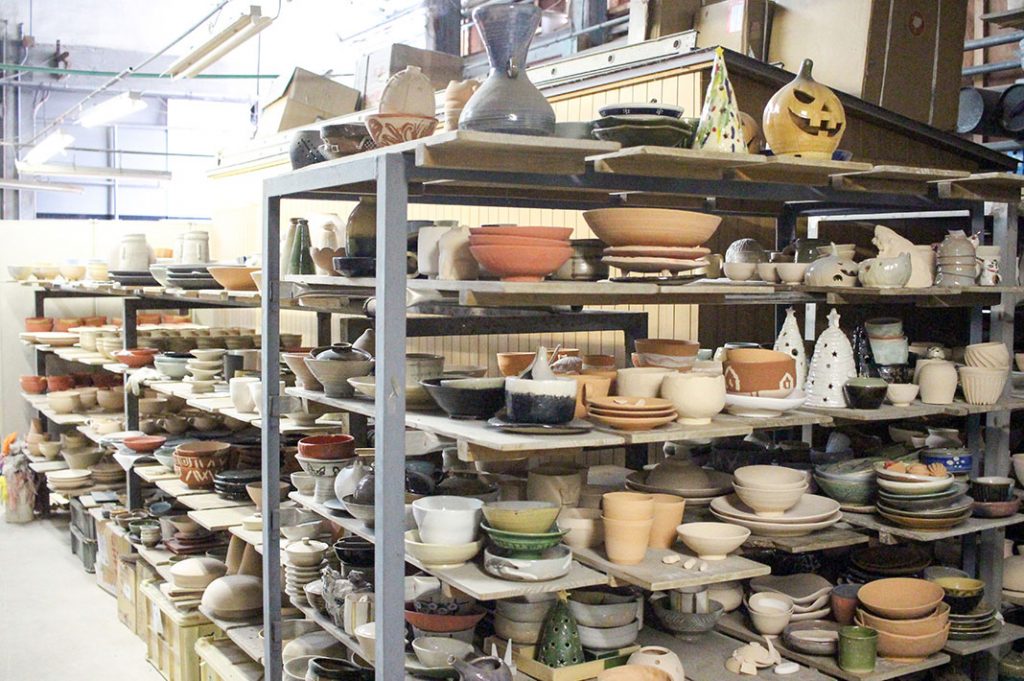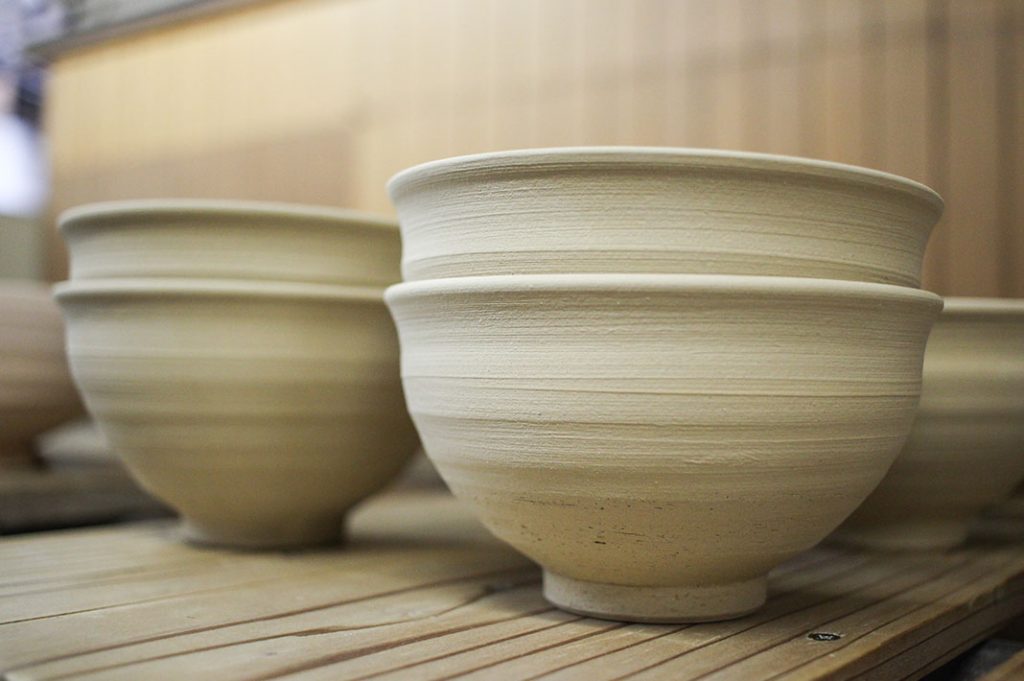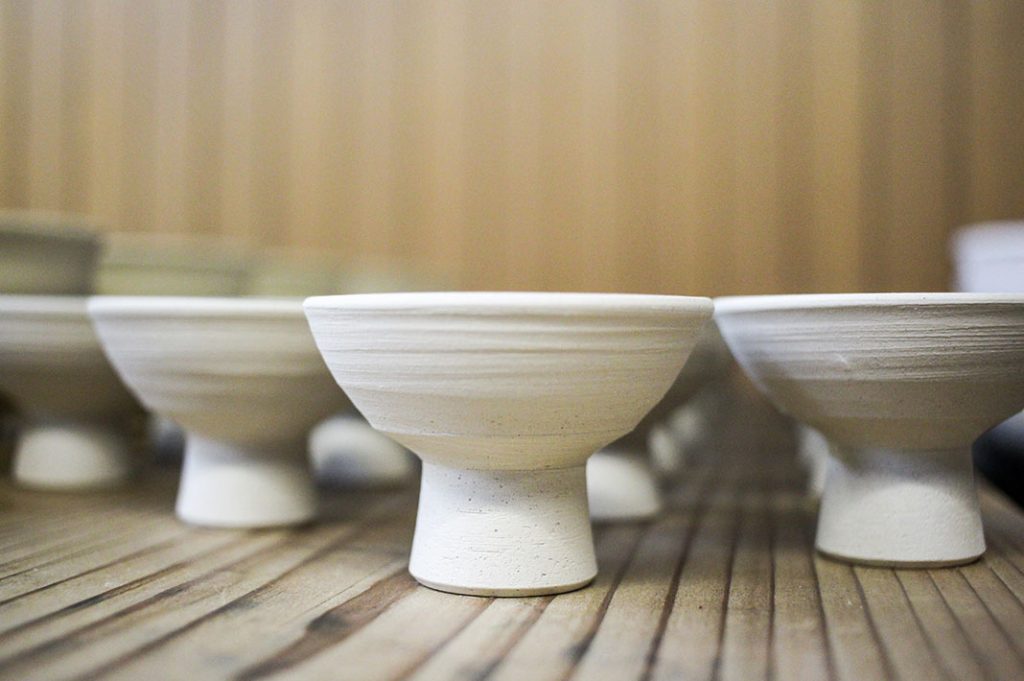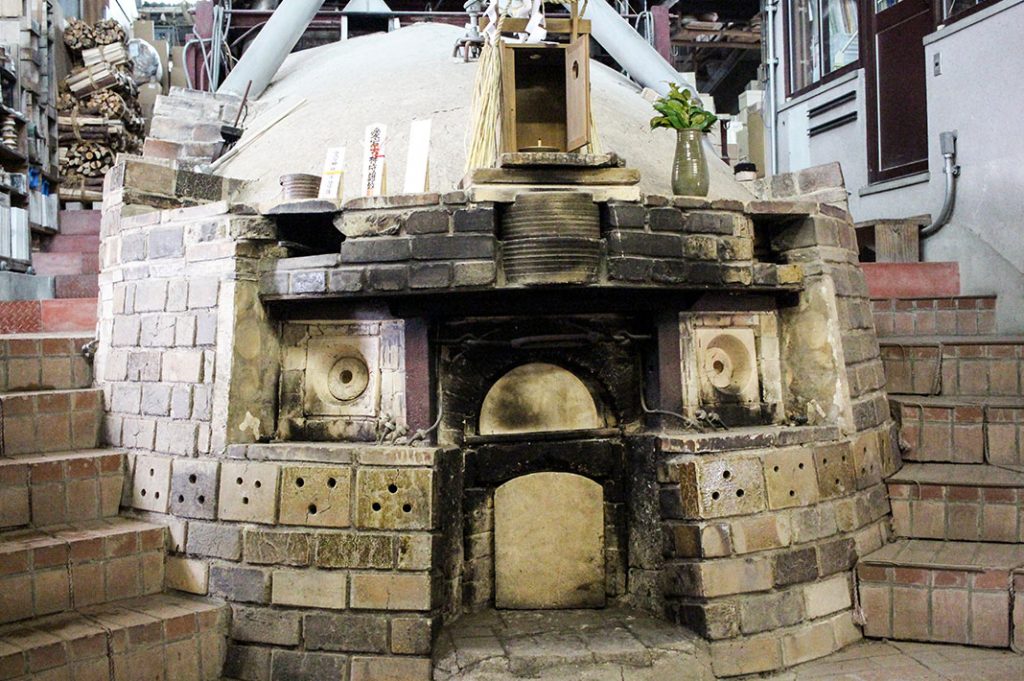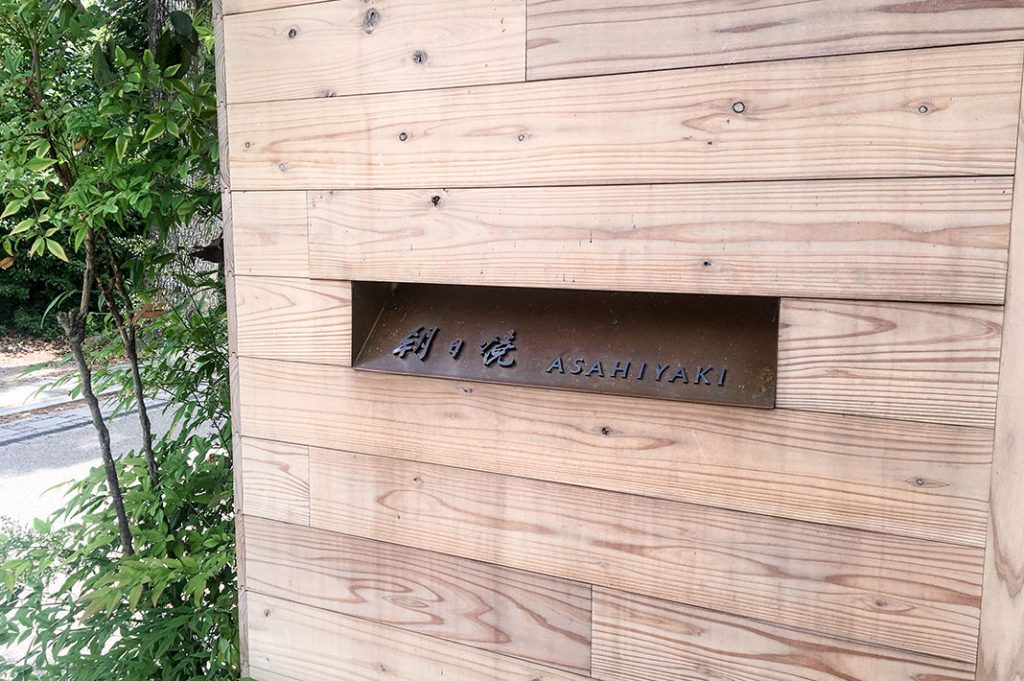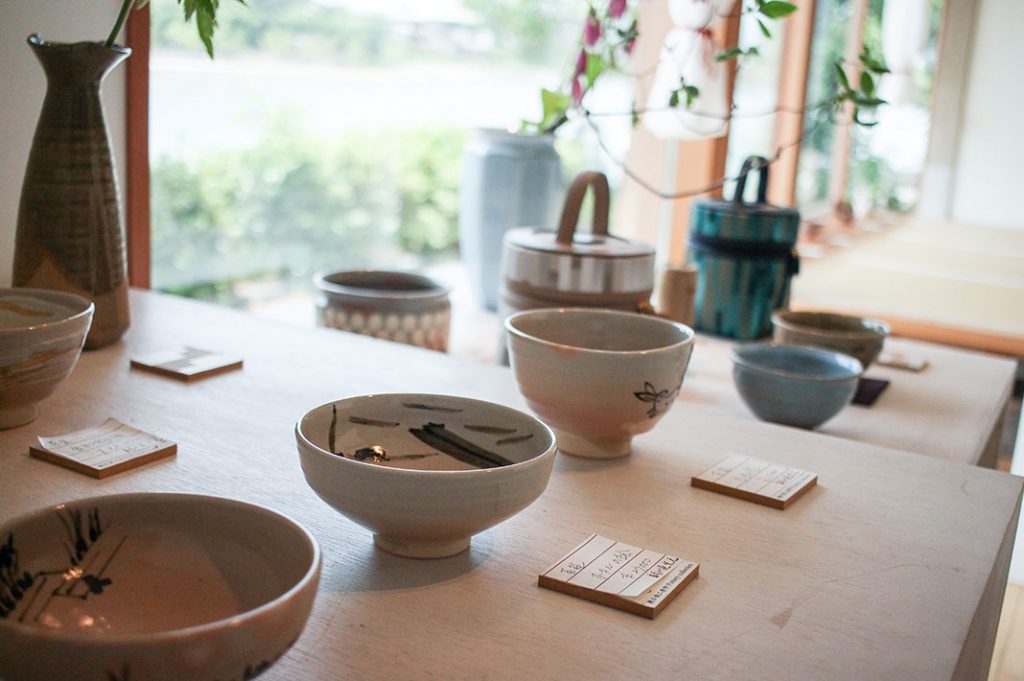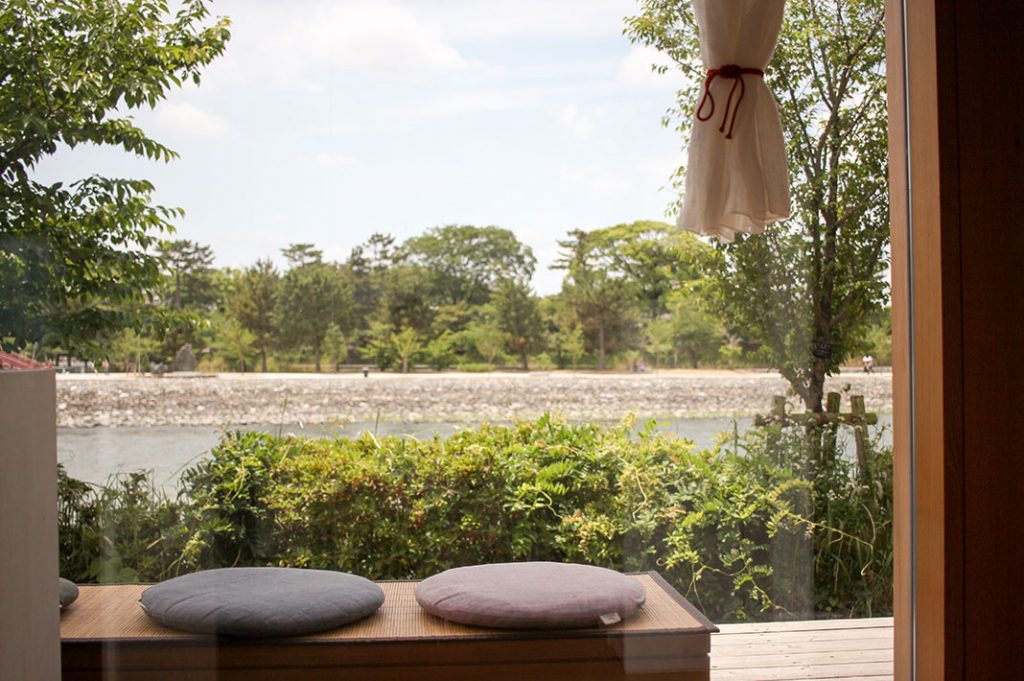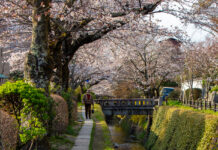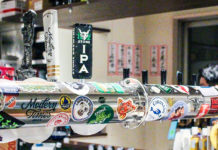As I stared over the Asahiyaki instructor’s shoulder during the pottery wheel demonstration, I thought of that scene from Ghost. You know the one; the one every potter secretly prays won’t be mentioned as they don their apron each day. The one that induces a wince when it inevitably does. I pushed it from my mind and wondered if I’d just missed a key step in the instructions. After all, I was going to have my hand-made pieces shipped to me, on display for years to come; I wanted this Japanese pottery class to be a success.
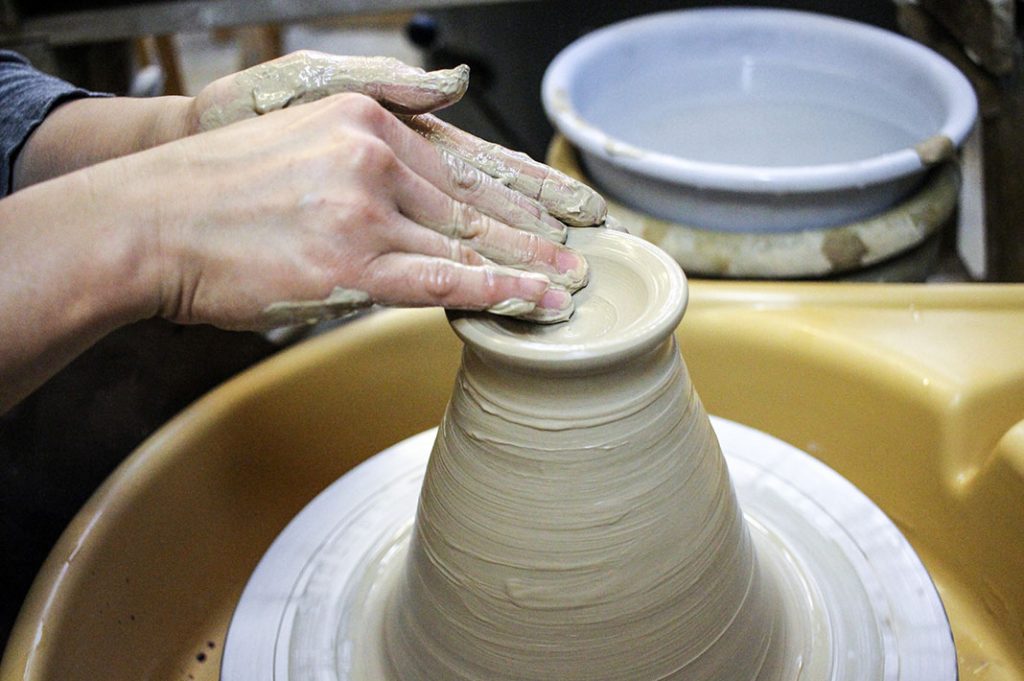
Getting there is half the fun
The Kyoto town of Uji is well known for its long legacy of delicious green tea. With such an inherent tea culture (including tea ceremony), I couldn’t think of a better place for a pottery class.
Just 30 minutes south of Kyoto Station, Uji is an easy day-trip. From Keihan Uji Station, the Asahi Pottery Studio is a leisurely 10 minute stroll along a picturesque tree-lined street running parallel to the Uji River. And as you meander along, you’ll enjoy glimpses of the water as well as homes, shops and shrines. Uphill on the left is the UNESCO World Heritage Site Ujigami Shrine, great for a visit if you have time.

On the right, you’ll pass a chic looking pottery store with masterful works on display. This is the retail side of Asahi potters and indicative of the skill the instructors would be bringing to the table (and wheel). Keep walking, you’re not far!
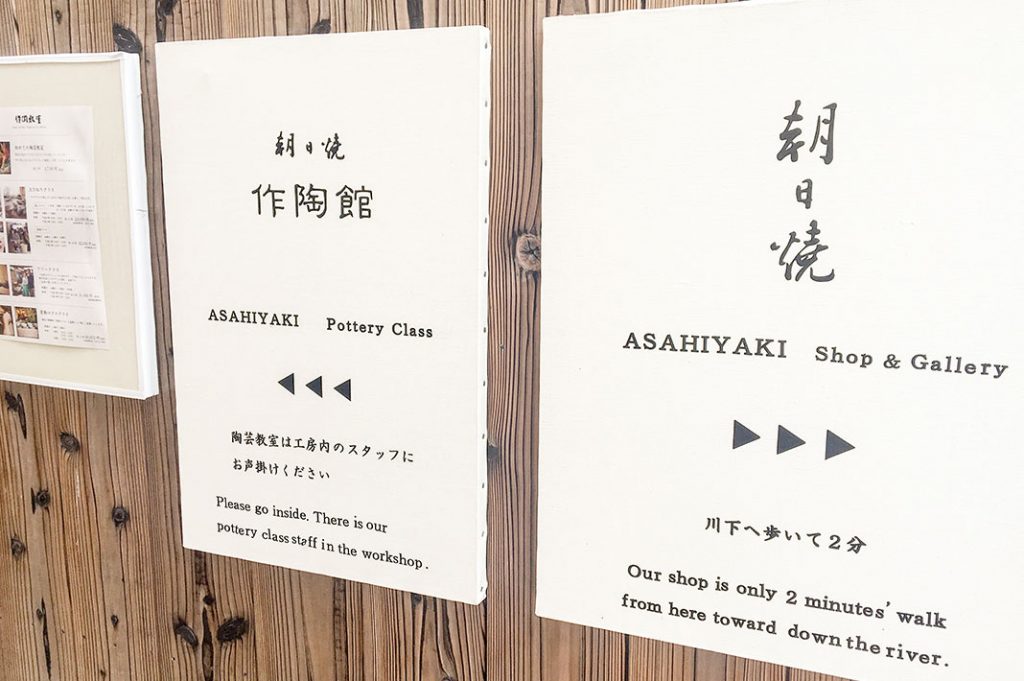
Arriving at the studio, follow the signs through the maze of workspaces, old wood fired kilns and racks of ceramics until you reach the classroom in the furthest back corner.
Japanese Pottery Class at Asahiyaki
I was the first of the three participants to arrive so had time to contemplate the giant mound of clay at my wheel. The instructor had set up our stations side-by-side and, as I later found out, fortunately centered our clay.
The structure of the class was an English demonstration on how to make a tea bowl followed by free time to create. At the end of the allocated 1.5 hours, you can choose which items to keep. The instructor will then trim, fire, glaze, carefully pack and send them to your desired address anywhere in the world.
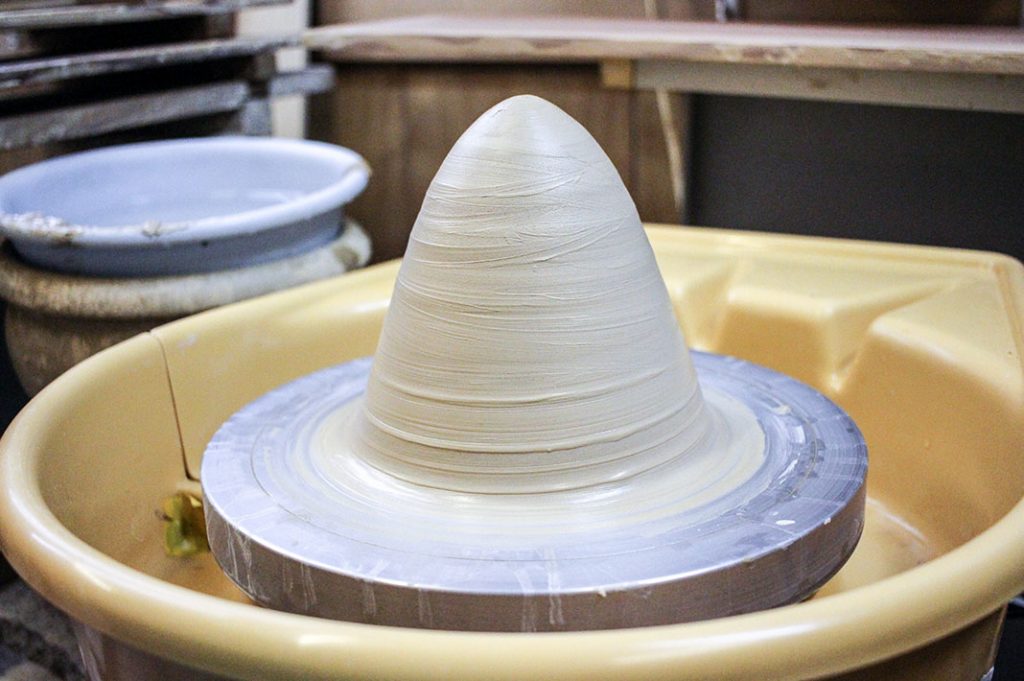
But, first things first, making those masterpieces. Here’s what I learned:
Pottery is kinda hard
Our ever-patient and encouraging instructor demonstrated the steps involved; push down with the heel of your palm to form a flat base. Easy. Brace the left side of the clay gently with your left hand. No worries. Form the three-fingered scout’s honour gesture with your right hand, press down on the spinning clay, pressure through the middle finger, moving slowly to the left to create your shape. Wait. The rest escaped me, despite her running through it twice. It’s probably why I required extra help when my clay flopped or cracked. She was a clay whisperer, effortlessly creating beautiful pieces or patiently returning my mangled mound to the starting position.
There are regional differences
To me, clay is clay. Though my classmate, a seasoned potter, was intrigued by the differences to American methods. Firstly, the clay was a local Uji clay, different from anything she’d worked with before. There was also much more of it than typically on the wheel. It seems the spin direction was also opposite; she had to switch hers after a while.
Lastly, the tools were different. When it came time to cutting the bowl from the clay, we used a string with a small wooden toggle on one end. You stop the wheel, hold onto the small wooden bar of the cutter on the left side of your cup/bowl, drape the string around the base in a clockwise direction, then start the wheel and let the momentum do the cutting work. Very clever and very fun, except when you let go of the wooden end and it flaps around dinting your smooth edges.
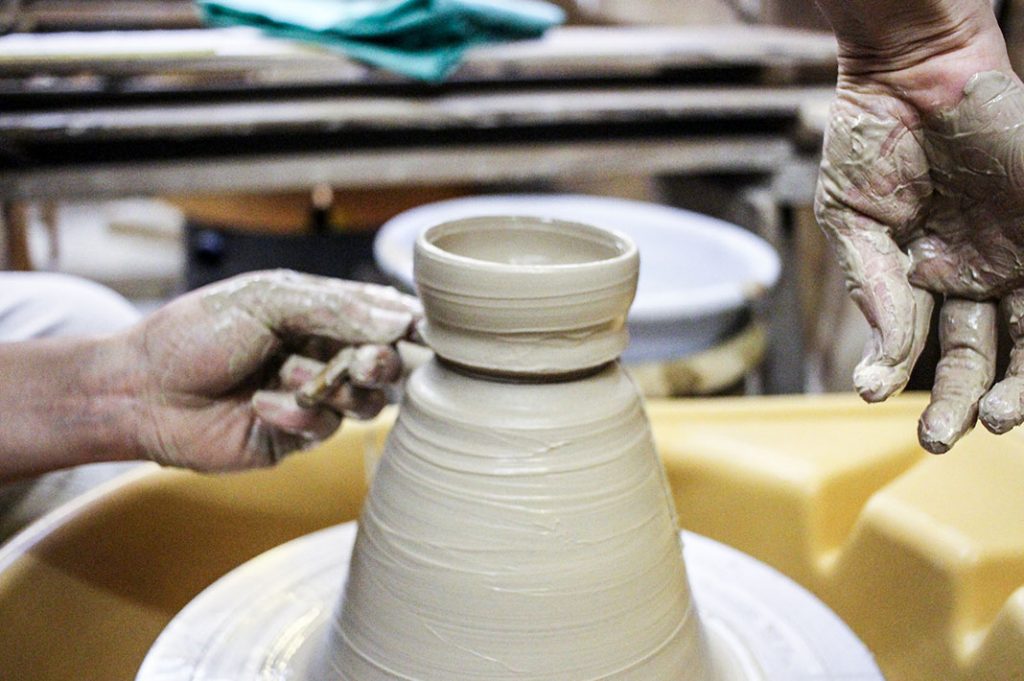
Practice makes perfect, or good enough
The quality of my work definitely improved by the end of class. In the beginning, the information and sensation was overwhelming and I inevitably span off-script. This lead to a lot of failures, which the lovely instructor promptly fixed. She made it look effortless; the slightest movement or pressure could transform your piece. Or ruin it. The key, I found, was to embrace this fact and just have fun with it. See what shapes you can get. And if it’s a flop, start again. After my mid-lesson reminder of the steps, I was creating better than ever.
Pottery is awesome
Even though I’m no Toshiko Takaezu (look it up), I loved my Kyoto pottery class and want to seek one out close to home. The glide of the clay under slippery fingers, the focus, the hum of the wheel the only sound—it’s meditation.
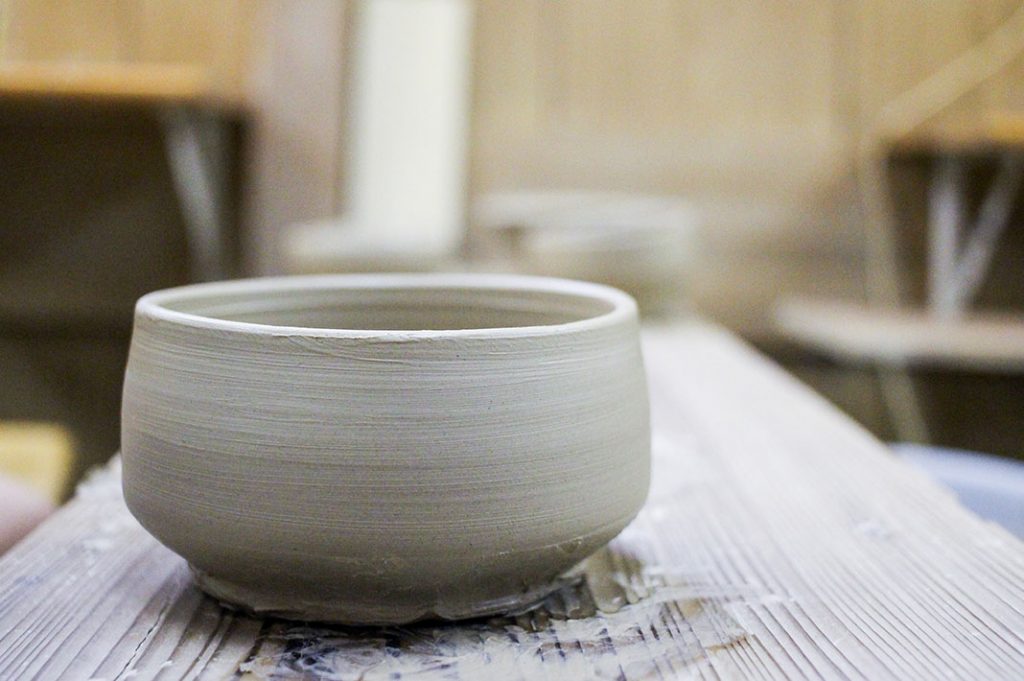
Receiving your work
At the end of the class, you decide which (if any) of your creations you would like to keep. As they are still wet, the staff will need to finish them off for you. This involves trimming, firing and glazing with Hanshi—a transparent glaze with a mottled pattern and warm pink tone.
International shipping is no problem. Once you decide which items you want and where to send them, they will calculate the total price. Payment is in cash. The cost varies; the class has a base cost and then there’s an additional charge per item you want finished, plus the shipping cost. All details can be found on their website. It takes about 1.5 to 2 months for the process to be complete.
The Asahiyaki Shop and Gallery
Afterwards, I headed to the Asahiyaki pottery shop I had passed earlier. The shop had a sweet garden, stunning river views and some very refined works for sale.
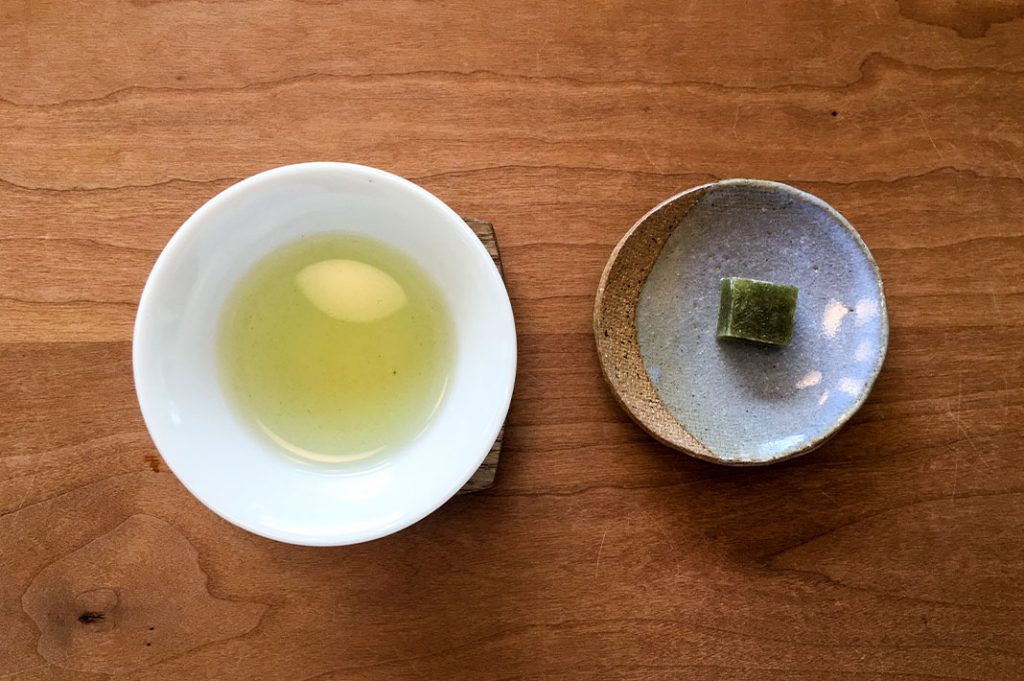
The staff served me refreshing mizu dashi cha (cold brewed tea) and a traditional sweet called higashi, a tea ceremony favourite. It has the appearance of a sugar cube and crackled in my mouth like sugar flakes before the liquidy center spread across my tongue. It tasted of matcha and was a delicious punctuation to my tea-centric morning.
Details of the Kyoto Pottery Class:
Name: Asahi Pottery, Japanese pottery class
Address: Ujiyamada 11, Uji, Kyoto
Open: 10am–5pm every day except Monday
URL: http://asahiyaki.com/sakuto/english/
Post by Japan Journeys.




